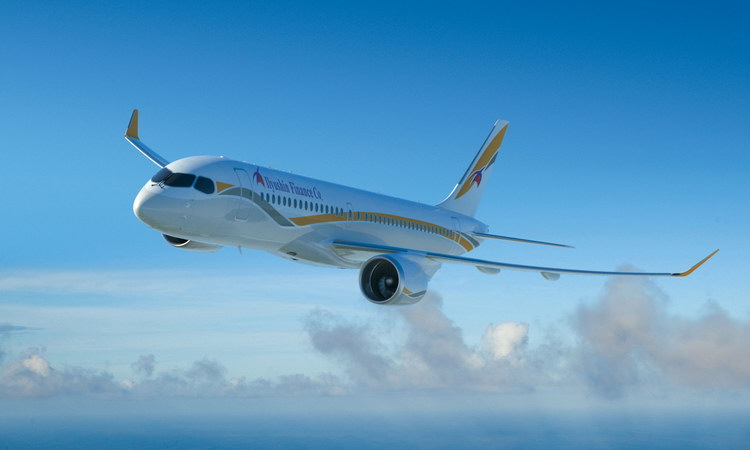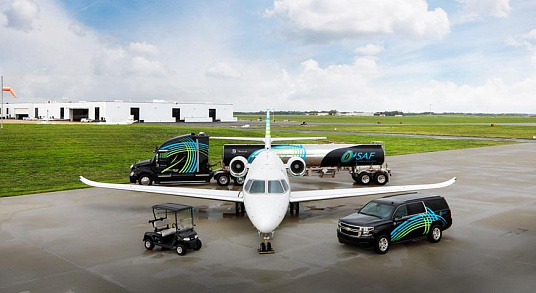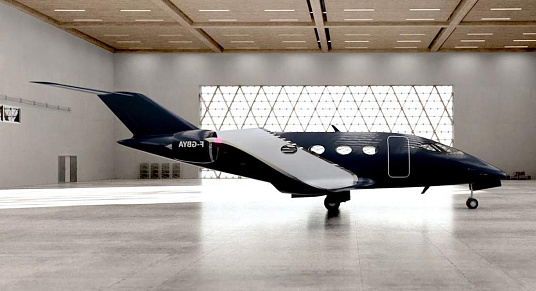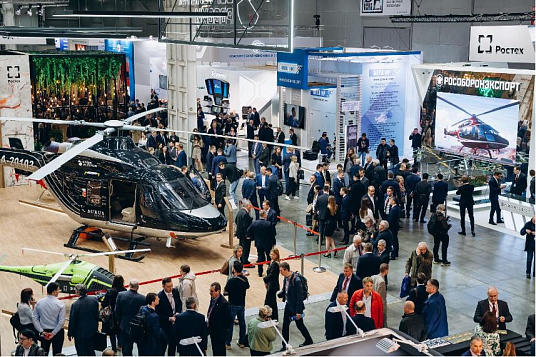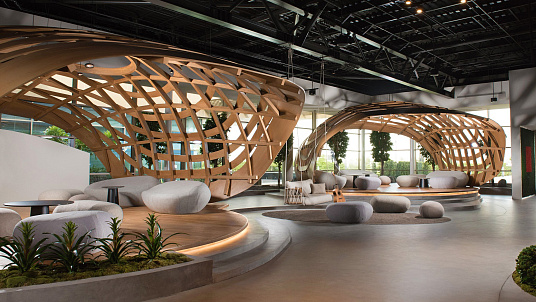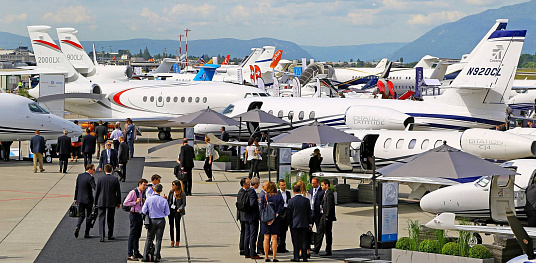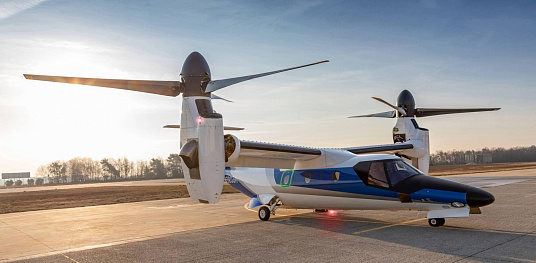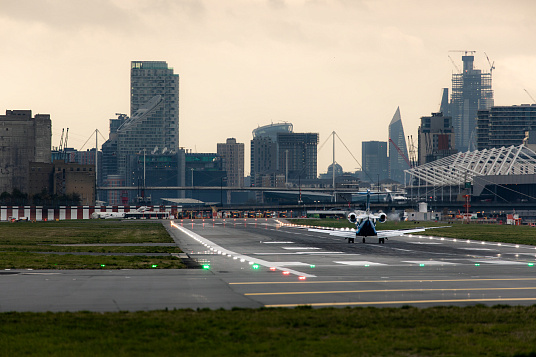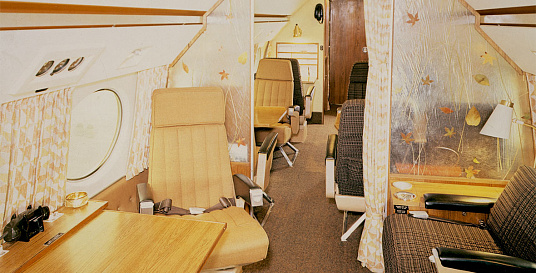Last summer the Russia’s largest civil aircraft lessor signed a great number of firm contracts and agreements with different airframers. For example, during MAKS-2013 airshow Ilyushin Finance & Co. (IFC) signed for a total of 92 aircraft (having signed lease agreements with carriers only for 64 liners). The task of finding customers for the rest vehicles was given to a new management team, which comprises residents of foreign countries. The journalists from AEX.RU discussed the matter with Stewart R. Cordner, International Sales and Marketing Director of IFC.
Stewart Cordner's area of responsibility is the whole world except for Russia and CIS Region. At that Mr. Cordner noted that he has established great contacts in some countries of the CIS Region and he will surely use them in further work. «We are a big family, we work as a team and always help each other». A vast experience in the area of customer relations helps Stewart to implement policy of “dynamic pursuit of market demand”.
Over the course of his action-packed career Mr. Cordner has been working in China for three years as a technical representative and spent three more years in Colombia. «When you live in a foreign country for a long time you start to understand the way people work there, understand their motivation and get “the feeling of the country”. I am confident that the whole Asia is of interest for IFC. Latin America is also attractive, but the business in this region is on another level and it is dominated by Boeing and Airbus. They force the local carriers to purchase their aircraft and so the Latin America’s carriers have to build their route network relying on the purchased liners instead of real market demand».
Meanwhile European and North American airliners are often appear to be too large for profitable work in a given route network. According to Mr. Cordner, Russian-produced Sukhoi Superjet and Canadian-made Bombardier CSeries have a great potential for the market of Latin America and some Asian countries. «There is a significant gap between regional aircraft and single-aisle liners manufactured by Airbus and Boeing. And this gap should be filled with the new models. We are trying to convince the airlines to take a closer look at these vehicles. Thorough analysis of actual passenger traffic on the existing route networks of many carriers shows that they need an aircraft sized between regional and single-aisle liners». The Interjet’s order for 96-seat SSJ100-95B aircraft confirms this theory.
The direct comparison of CSeries and А319 demonstrates that the latter jet (a shortened version of A320) is significantly heavier than the Canadian-produced liner, while both vehicles have almost the same passenger capacity. «The aircraft empty weight of CSeries is 12 tons lower! Coupled with better fuel efficiency these factors give the jet more range. This is the results of expert optimization of the given model for the specified passenger capacity: from 100 to 150 seats». Moreover, he also believes that CSeries has some more advantages, including “state-of-the-art technologies and great environmental performance, which will remain best in the world in the near term”.
The next-generation Embraer E-190 and E-195 (E2) may compete with the aircraft in 120-125-seat segment. «However, they said that they are not going to increase the passenger capacity of their jets; they are just going to upgrade the existing liners in order to improve the fuel efficiency. In other words, Embraer’s products remain in the regional aircraft category – traditional market for Brazilian products. However, there still may be some competition between Embraer jets and CS110. But it won’t affect us, because we have placed orders only for larger CS300. In addition we will take delivery of our jets three of four years before the next-generation Embraer jets will enter market”.
With the beginning of flight testing of CSeries the carriers’ interest in these vehicles grew. «I think that all people involved in aviation industry, regardless of what aircraft types they are working with, are keeping an eye on news related to A350 and CSeries. The maiden flights of clean-sheet design commercial aircraft happen once in many years and that makes them events of the global scale. While monitoring the news about these jets passing different testing stages the specialists of different airlines go in for the new aircraft and it gets easier to work with them».
Only one CS110 prototype has performed several flights thus far. It has also successfully passed the flutter test. The second prototype will perform its maiden flight in late 2013, the third one – in early 2014. A total of seven prototypes will be taking part in the flight test program – five CS110s and two CS300s.
We need to wait a couple of months for documents confirming the claimed weight and operational characteristics. While passing the test stages temporary restrictions in the area of speed, ceiling and other parameters are lifted. «We talked to potential customers before and after the maiden flight. And we saw the interest in CSeries growing, even if they deny the fact, because they are playing “the game of negotiations”. During negotiations they ask clarification questions more often – it is a sign that they are really interested in this matter».
The carriers ask most of the questions about fuel consumption data obtained during flight. «Today everybody wants to know the values indicated by the fuel flow meter», - M. Cordner said. Since PW1500G test program has already amassed many hours during ground and flight testing the airframers now have a good idea of CSeries’ fuel consumption (allegedly, the fuel flow rate in cruise mode is about 1800 kg). «Of course we got some guarantees from the airframer granting that the jet’s most important characteristics will be as claimed. And Bombardier does not provide any guarantees until they are 95% sure that they will be able to reach claimed parameters».
As one of the first customers (firm contract for 32 jets with an option for 10 more ones), who signed the contract prior to the maiden flight, IFC regularly gets information on passing the test stages. «We are satisfied with the work pace. At the same time, although it’s hard, but we must stay calm: we want to get our jets as soon as possible – tomorrow is better than the day after tomorrow!», - Mr. Cordner noted.
The talk turns to deliveries of marketable products. «We would have never ordered the first serial jets, especially foreign-produced jets», - he says. The deliveries will increase as the production output grows. «We are not the first in line: there are two or three operators ahead of us, who ordered the jets directly from the manufacturer and will take deliveries of the aircraft first. Among them are: Lufthansa Group, Malmo and airBaltic. IFC’s turn will come in late 2015».
The “let someone else test this aircraft for us” tactics is well-known in aviation and used widely. Lufthansa was the launch customer for CSeries and took an active part in the aircraft’s development. «We know that they are capable of maturing the aircraft», - he said. The next carrier is Malmo. «The owner of the company is managing the operating activities himself; he goes into all the details and saves every penny he can. I think that he will do his best to make his fleet comprising 10 aircraft run like clockwork. Large operators like Lufthansa place their stake on large passenger traffic, while small airlines like airBaltic have to see into all the details of the economy of their operating activities. We feel confidence when we see such customers».
The affordability of new aircraft in the beginning of production program is a good food for thought. As the production output increases the problem loses its urgency: a lot of aircraft are delivered to the customers and it gets harder for lessors to lease their liners to the airlines. Mr. Cordner said: «We have spent a lot of time choosing the delivery conditions. On one hand we didn’t want to purchase the vehicles from the first batches, on the other hand – we are not willing to take delivery of our aircraft in parallel with other lessors. Of course early slots are important and that what made us place our order on early stage of the project. After thorough analysis we have selected the most “delicious” period of time. Only a few lessors (including IFC) will be able to offer CSeries jets during the period until 2020».
The difference between purchasing a new efficient aircraft in 2015 or 2019 is great. Primarily because CSeries has lower fuel consumption and operational costs as compared to the currently operated vehicles. «During negotiations with an airline we try to explain that we will deliver these jets four years before the others will. And each year it will reap financial benefits amounting to $2 - $5 million per jet. That’s the kind of talks we are in with the carriers».
Of course delivery dates and conditions depend on the airline, number and type of aircraft in its fleet and the carrier’s route network. The delay of flight testing of CSeries primarily affects the customers of CS110. As for CS300, its customers have nothing to worry about yet. «I don’t think it will affect us. The major scope of flight testing and initial operation period is accounted for CS110. The degree of commonality between CS110 and CS300 is about 80-90%. In fact the key difference between CS110 and CS300 is the stretched fuselage of the latter one».
From the viewpoint of IFC, it is easier to promote CS300 aircraft thanks to a great job accomplished by Bombardier in many countries of the world over a period of several years since the start of CSeries program. The manufacturer focused on a large customer base comprising many operators of CRJ aircraft family (CRJ 100, 200, 700, 900, 1000, etc.) and Dash-8 (including Q300 and Q400), along with operators of Challenger, Global/Global Express and Learjet business jets, and amphibian aircraft CL-215/415. «Bombardier has an enormous customer base; its products are operated all over the world. That is why the company receives Request for proposal (RFP) from different carriers regularly», - Cordner said.
Sending the RFP is typical of carriers from developed countries. In fact, this is the beginning of procedure for selecting a new aircraft, when the operated liners need replacement. After receiving the answer from the manufacturers the airline starts to analyze the proposals. Usually the analysis is followed by selection of an aircraft type, which suits the carrier’s network best.
Let’s say a potential customer decided to purchase CSeries aircraft. The next question is “where to buy the aircraft?”. At this stage a wide range of suppliers is considered (including manufacturers, banks and lessors). Financial terms and delivery dates are very important. Mr. Cordner added: «At this stage IFC is considered very often because we have early slots. We receive RFPs – how many aircraft can you deliver and what are financial terms of a potential contract?».
The first contact with the potential client is very important for establishing a mutually-beneficial partnership. There are times when a carrier considers and rejects proposals for one aircraft type (provided that the airline likes its future partner) and decides to take a look at another aircraft types offered by the lessor.
«The airlines I work with typically ask about Superjet. Probably due to certification of this vehicles by aviation authorities of other countries (including Indonesia, the fourth nation of the world in terms of population with a fast-growing economy). The second most popular jet in terms of the number of inquiries is MS-21. The interest in MS-21 grows after international airshows, where the manufacturer declares that MS-21 grants lower operational costs as compared to Airbus aircraft, including A320neo Family. We advise our foreign clients to take a closer look at An-148/158. I personally like this jet. I used to work for BAe Systems and I was responsible for BAE-146 and Avro RJ programs, which have a lot in common with Antonov aircraft even in terms of appearance».
There are also times when the client considers the proposal on CSeries and following the results of a thorough analysis decides that these jets are not suitable for him. And then he thinks: «why not consider Superjet?». Generally it is very interesting for IFC’s employees to work with the airlines. For example, it is interesting in terms of exchanging information and experience gained in the network of implementation of different aviation programs.
«Such an exchange may give better understanding of goals and objectives of a given operator and helps find the best solution together. For example, the carrier may operate Superjets for 3 or 5 years and then switch to larger CS300 or MS-21. The lessor’s diverse portfolio allows it to offer airlines fleet management programs designed especially for them. It is very important for us, because such programs help us make a carrier our long-standing partner for years to come. But we must be able to offer one aircraft type and replace it with another one after a few years».
The largest airshow in Middle East, Dubai Airshow 2013, was held on November 17th – 21st. Traditionally Russia will take part in the show. The employees of IFC’s international department started preparation for Dubai Airshow long before its opening. «We would not order a chalet at the show if we did not see a business opportunities there. We would not spend money without a chance to cover these expenses in future. At present nine of my employees are elaborating a special marketing plan for working with the Middle Eastern clients», - Stewart Cordner said.
The key feature of this region is relatively short history of its “civilized” development. In fact it was started after opening of the first public school in Dubai in 1971 and the first hotel – in 1973. The emirate’s history in the area of aviation is even shorter. «It is an excellent market with an effective demand fed by politically-motivated decisions and excess of petrodollars. A lot of aircraft made in USSR and Russia are operated in the region (especially military and transport aircraft). The operational conditions are as follows: dusty airfields with lots of sand, high ambient temperatures. These factors count in favor of operating Russian-produced aircraft in the region. Having a diverse portfolio comprising Russian-, Ukrainian- and Canadian-produced aircraft we see a bright future for our company at the market».
